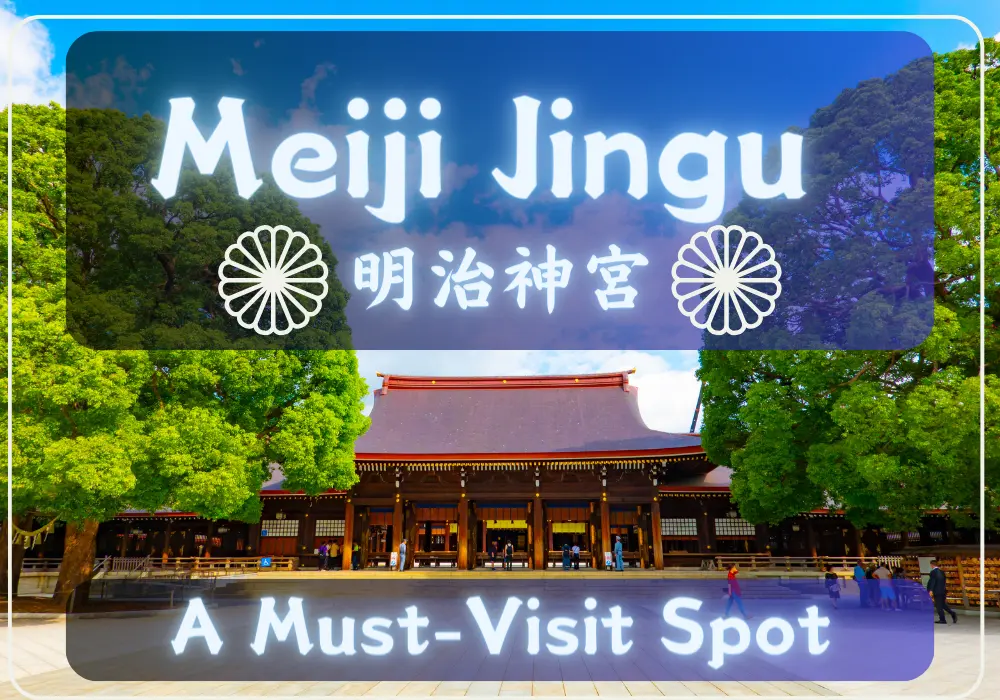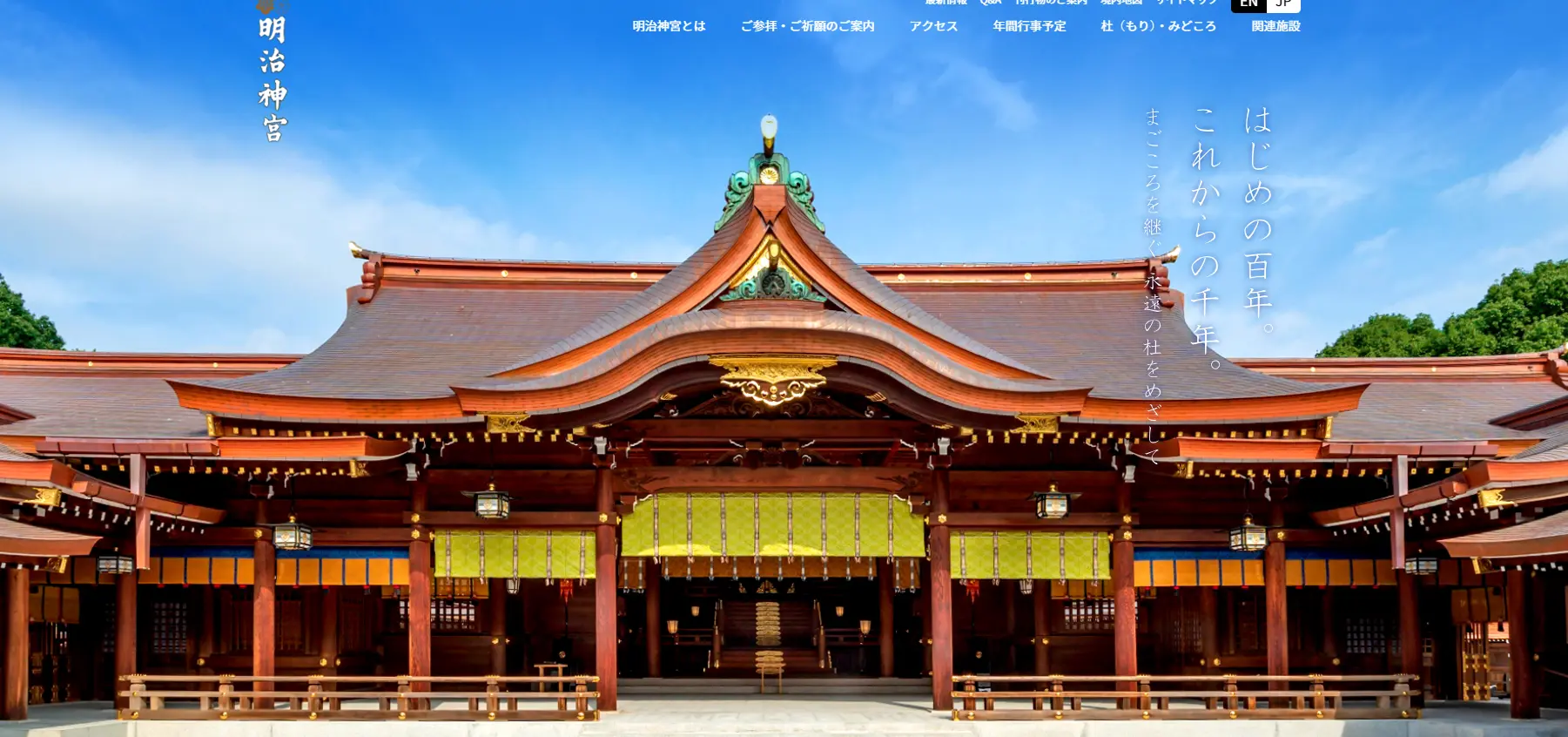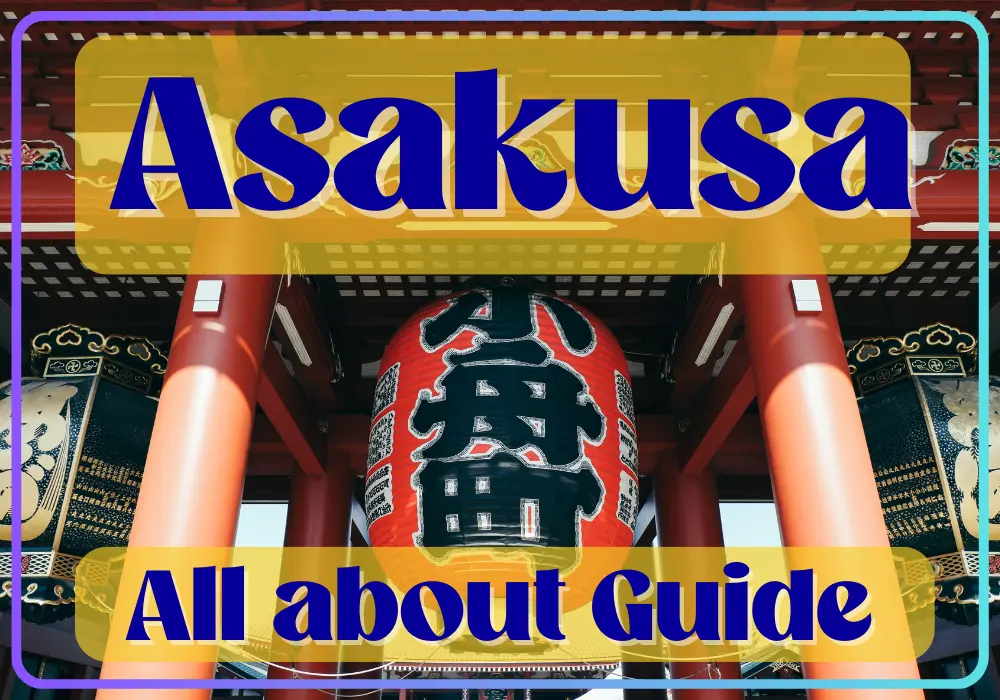Meiji Jingu Shrine, a mystical sanctuary located in the heart of Tokyo, was established in 1920 and is dedicated to Emperor Meiji and Empress Shoken. Surrounded by a vast forest spanning approximately 700,000 square meters, it offers a serene escape from the bustling city.
Known for having the highest number of visitors for the first shrine visit of the New Year (Hatsumode) in Japan, Meiji Shrine is a highlight of Tokyo tourism. In this article, we will introduce Meiji Shrine and its must-visit spots.
Meiji Jingu (Shrine)
A very beautiful shrine!
A very beautiful shrine! There are a lot of nice areas to walk around and the main area to pay your respects. There are multiple ways to engage with the shrine and it is a nice experience no matter who you go with. Everyone’s very respectful. It’s a bit busy, understandably so.
Holy and spiritual place
an magnificent japanese holy and spiritual place I have been ever in my life. Has 2 sacred trees which will give us a spiritual power to make your wish(especially romance luck, helps to achieve your goal in academic/workplace area, health and family safety ) come true. I feel very cleansed after i leave there because of strong spiritual power of the god.
Amazing
Amazing, and beautiful shrine located in the middle of a gorgeous park. Don’t miss a visit while in Tokyo. I went twice, tossed a couple of coins, witnessed a wedding procession, and explored the park at leisure.
From Google Review – Meiji Jingu Shrine
| Open Hours | Meiji Shrine opens at sunrise and closes at sunset. Therefore, the opening and closing times vary depending on the month. January: Opens at 6:40 AM, Closes at 4:20 PM February: Opens at 6:20 AM, Closes at 4:50 PM March: Opens at 5:40 AM, Closes at 5:20 PM April: Opens at 5:10 AM, Closes at 5:50 PM May: Opens at 5:00 AM, Closes at 6:10 PM June: Opens at 5:00 AM, Closes at 6:30 PM July: Opens at 5:00 AM, Closes at 6:20 PM August: Opens at 5:00 AM, Closes at 6:00 PM September: Opens at 5:20 AM, Closes at 5:20 PM October: Opens at 5:40 AM, Closes at 4:40 PM November: Opens at 6:10 AM, Closes at 4:10 PM December: Opens at 6:40 AM, Closes at 4:00 PM |
| Official Website | https://www.meijijingu.or.jp/ |
Meiji Jingu shrine is dedicated to Emperor Meiji, the 122nd Emperor of Japan, and his consort, Empress Shoken. Emperor Meiji passed away in 1912 (Meiji 45) and Empress Shoken in 1914 (Taisho 3). Following their passing, many citizens expressed a desire to enshrine their spirits, leading to the shrine’s establishment on November 1, 1920 (Taisho 9), in Yoyogi, a place closely associated with the imperial couple.
Since its founding, Meiji Shrine has been cherished as a place where people pray for the prosperity of the Japanese nation and world peace. It attracts the highest number of visitors for the first shrine visit of the New Year (Hatsumode) in Japan every year.
In addition to the impressive main shrine buildings dedicated to the deified spirits, there are many noteworthy spots, including the beautiful gardens loved by Emperor Meiji, the gardens maintained for Empress Shoken, the Treasure Museum, the power spot famous as the source of the shrine’s pond, and much more.
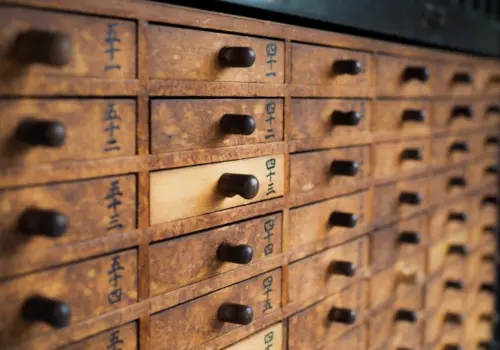
Omikokoro – No fortune Omikuji
Meiji Shrine’s omikuji, known as “Omikokoro,” is unique for not indicating fortunes (good or bad). Instead, it features 30 waka poems composed by Emperor Meiji and Empress Shoken, along with explanations.
By contemplating the meanings of these poems, visitors can gain insights for their lives. Each poem includes an English translation, allowing for a deeper understanding of its significance.
Highlight of Meiji Jingu Shrine
Fushimi Inari Taisha, with its beautiful scenery and deep history, continues to captivate many visitors.
The numerous attractions are what visitors look forward to the most. The grand torii tunnel, including the iconic Senbon Torii, the mystical mountain paths, and the expansive grounds dotted with various shrines and altars, are filled with an adventurous charm.
The Grand Torii of Meiji Jingu Shrine
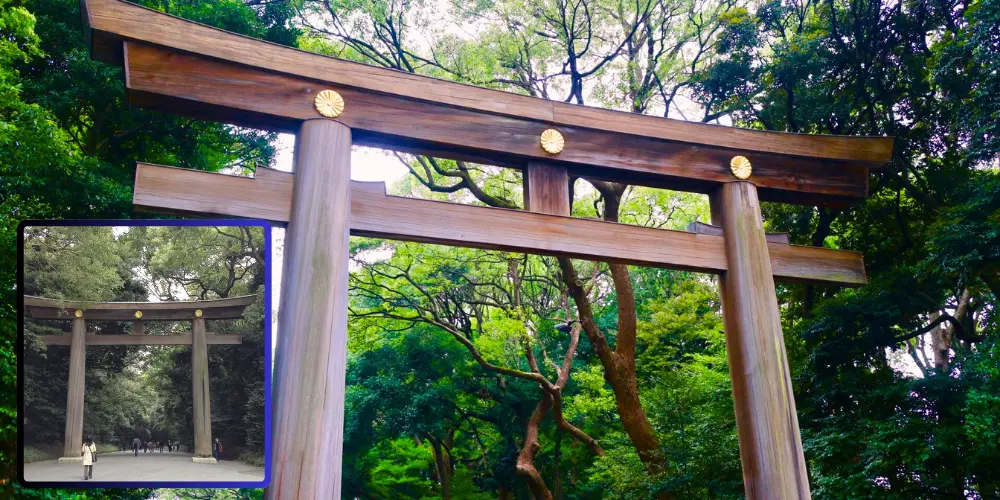
The Grand Torii of Meiji Jingu Shrine is the first monumental gate that visitors see, impressing them with its grandeur and historical significance.
The current torii was rebuilt in 1966 and stands about 12 meters high and 17 meters wide, making it one of the largest wooden torii in Japan. The wood used is over 1500-year-old Japanese cedar from Taiwan, adding to its majestic presence. Passing through the torii, visitors transition from the everyday world to a sacred space, cleansing their minds and bodies.
This torii is a spiritual symbol of Meiji Shrine, highlighting the shrine’s solemnity and grandeur.
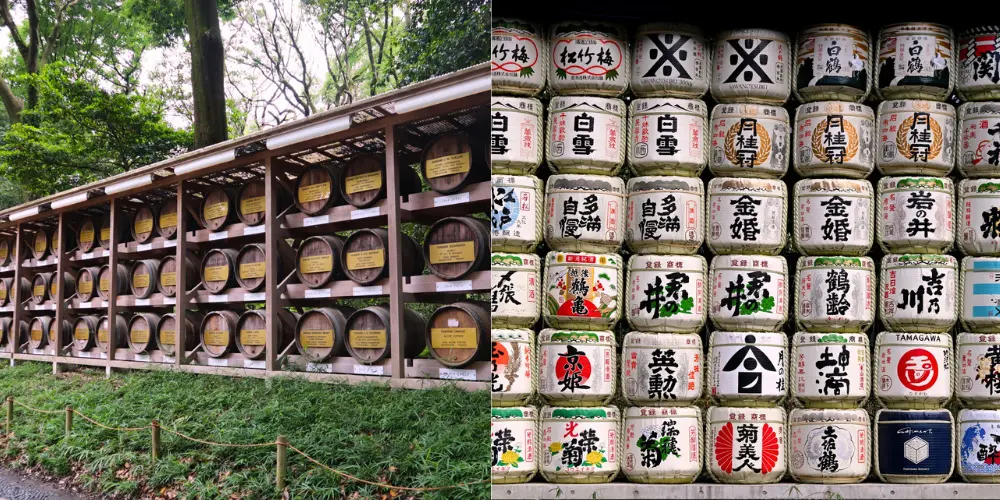
On the way to the main shrine, you will see “Wine Barrels” and “Sake Barrels.” The wine barrels were donated by producers in Burgundy, France.
Emperor Meiji actively adopted Western culture in various aspects of life, including food and drink, and wine was one of these elements. These barrels were dedicated because Emperor Meiji enjoyed drinking wine.
The Main Shrine of Meiji Jingu
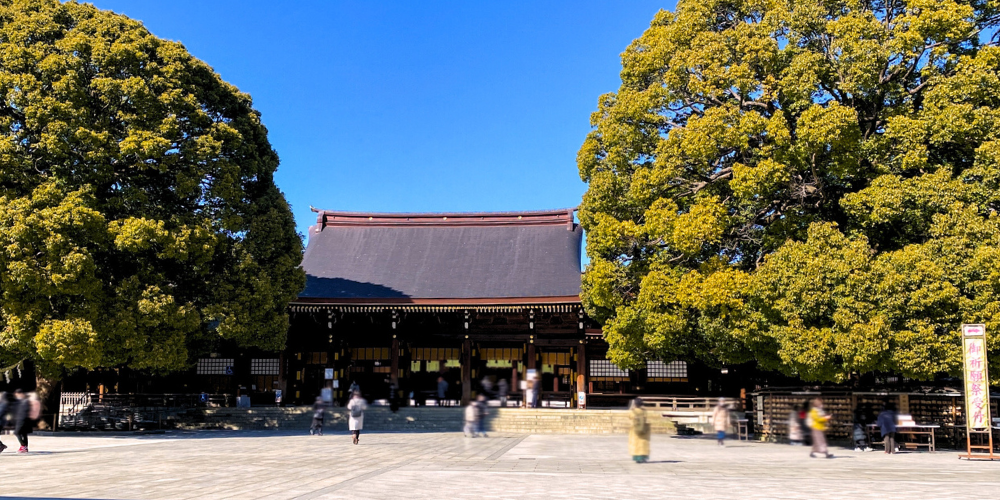
The Main Shrine of Meiji Jingu is a sacred structure dedicated to Emperor Meiji and Empress Shoken, where visitors offer heartfelt prayers. Originally built in 1920, it was destroyed in an air raid in 1945 and reconstructed in 1958.
The main shrine features the traditional Shinto architectural style known as “Shinmei-zukuri,” characterized by its simplicity and solemnity. Situated within a vast precinct, it harmonizes beautifully with the natural surroundings, providing a serene environment for visitors.
The main shrine is especially revered as the venue for significant ceremonies such as the first shrine visit of the New Year (Hatsumode) and weddings, attracting many people throughout the year.
Meoto Kusunoki
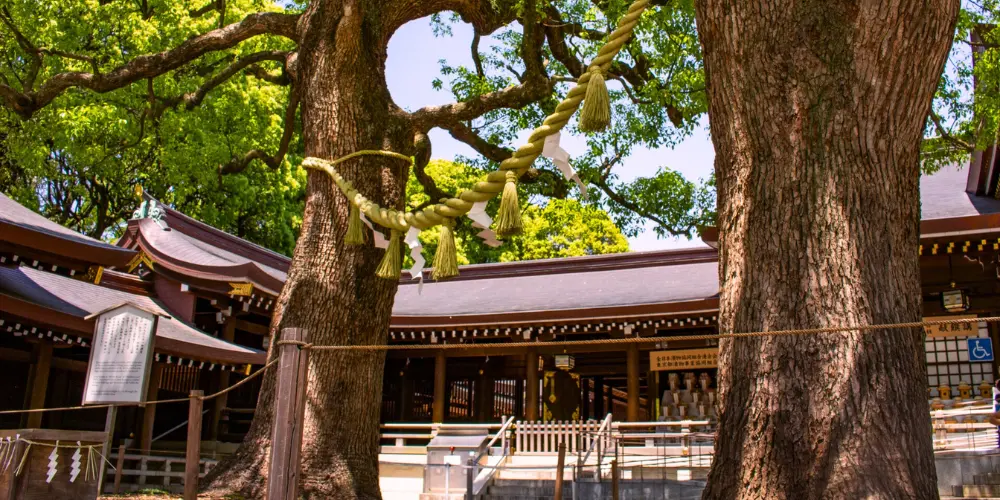
The Meoto Kusunoki (Married Couple Camphor Trees) are two enormous camphor trees within the Meiji Shrine precincts, cherished as symbols of marital harmony and family peace.
These two trees stand side by side as if they are embracing, hence the name “Meoto Kusunoki.” This spot is especially popular among couples getting married and visitors wishing for marital bliss.
At the base of the Meoto Kusunoki, a deity of matchmaking is enshrined, attracting those seeking success in love and good relationships. The robust camphor trees, thriving in their lush surroundings, are also seen as symbols of vitality. When visiting Meiji Shrine, offering prayers in front of the Meoto Kusunoki can be a way to wish for peace and happiness in one’s family.
Kaguraden of the Meiji Jingu Shrine
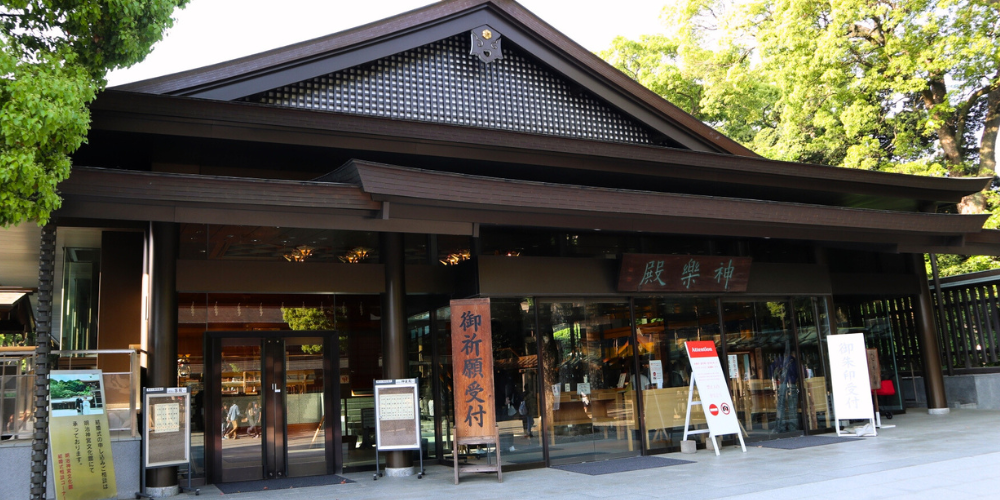
The Kaguraden is one of the key structures at Meiji Shrine, where traditional Kagura performances are dedicated.
Kagura is a classical Japanese dance and music performed as part of Shinto rituals to honor the deities. At the Kaguraden, these performances are held during special festivals and ceremonies, such as weddings, enhancing the shrine’s solemn atmosphere.
The Kaguraden at Meiji Shrine is a beautiful wooden structure, known for its simple yet refined design. Visitors can experience deep aspects of Japanese culture and spirituality by observing the ceremonies held here.
Meiji Jingu Gyoen (Inner Garden)– The Power Spots
The Meiji Shrine Inner Garden, located to the south of the main shrine, is an ideal place for a leisurely stroll after your visit. Entry to the garden requires a maintenance cooperation fee of 500 yen.
This historic garden has deep connections to Emperor Meiji and Empress Shoken. During the early Edo period (1603-1867), it was the garden of the lower residence of the Kato family, lords of the Kumamoto domain. It later became the property of the Ii family, lords of the Hikone domain, and was visited by the third shogun, Tokugawa Iemitsu. After the Meiji Restoration, the garden became part of the Imperial estate.
Visitors can enjoy the beautiful scenery that blends history and nature, with seasonal flowers and lush greenery. The Meiji Shrine Inner Garden is cherished as a place of tranquility and relaxation.
Beautiful garden
Beautiful garden with a pond, flower bushes and some bonsai trees. There is an irises field, but the irises still don’t bloom in mid-April. The teahouse was closed, but the path through the blooming trees was breathtaking. The attendance costs 500 yen per person. Certainly worth a visit.
Absolutely worth it
This is an extra 500 yen per person, but absolutely worth it. It’s lovely with many sections to visit. They provide and English map, but it’s not really needed. Just take an hour and wander around.
the magic of this place
This is one of my favorite place in Tokyo city. Especially in the early morning, you can’t believe Japanese make a foretaste in the middle of city. You can check all the angles and still have perfect feelings. small lakes, pools, a string, they are all very important in the Japanese culture. The flowers, the trees… visit here in different season and you still can feel excited about the same place. I am sure that’s the magic of this place.
From Google Review – Meiji Jingu Gyoen
Kakuuntei Tea House
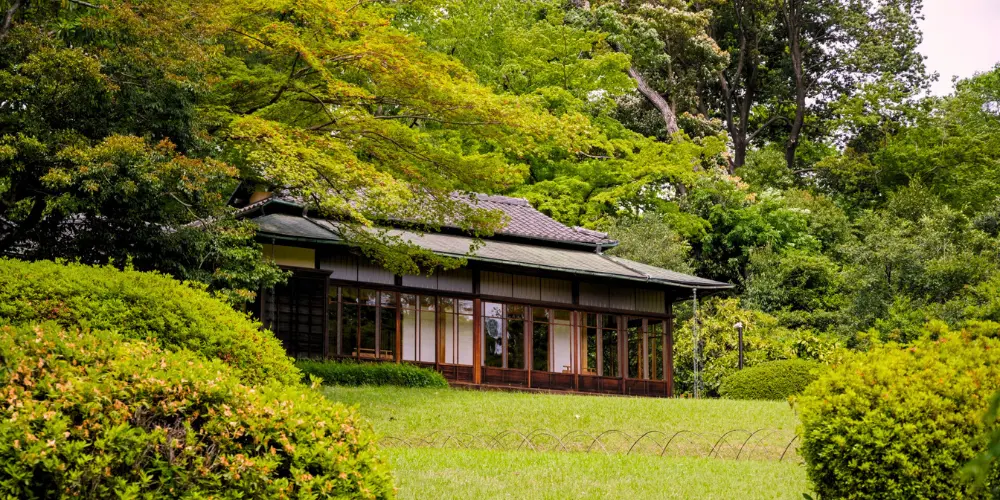
Kakuuntei Tea House is a beautiful tea house located in the inner garden of Meiji Shrine. It offers a peaceful and serene atmosphere. This tea house is situated within the garden that was developed for Empress Shoken, featuring a design that harmonizes with the natural beauty of the surroundings.
Kakuuntei is renowned as a place where visitors can experience the traditions of the Japanese tea ceremony, providing an opportunity to deeply appreciate Japanese culture and spirituality. It attracts many visitors, especially during the seasons of autumn foliage and fresh green leaves, who come to enjoy the stunning scenery.
The area around Kakuuntei features ponds and streams, allowing visitors to enjoy the beauty of nature throughout the year.
The Iris Garden (Shoubuda)

The Iris Garden, said to have been planted by Emperor Meiji for Empress Shoken, is a beautiful spot where irises bloom.
These irises are carefully preserved and nurtured, typically reaching their peak bloom around June each year. Although the flowering period is short, lasting about a week, many visitors eagerly await and flock to see the irises in full bloom.
The garden features a charming thatched-roof gazebo (azumaya), evoking a serene countryside atmosphere. Visitors can enjoy the tranquil beauty of the garden. For those interested, Meiji Shrine’s official website provides updates on the blooming status of the irises, so be sure to check it out.
Kiyomasa-no-Ido (Kiyomasa’s Well)
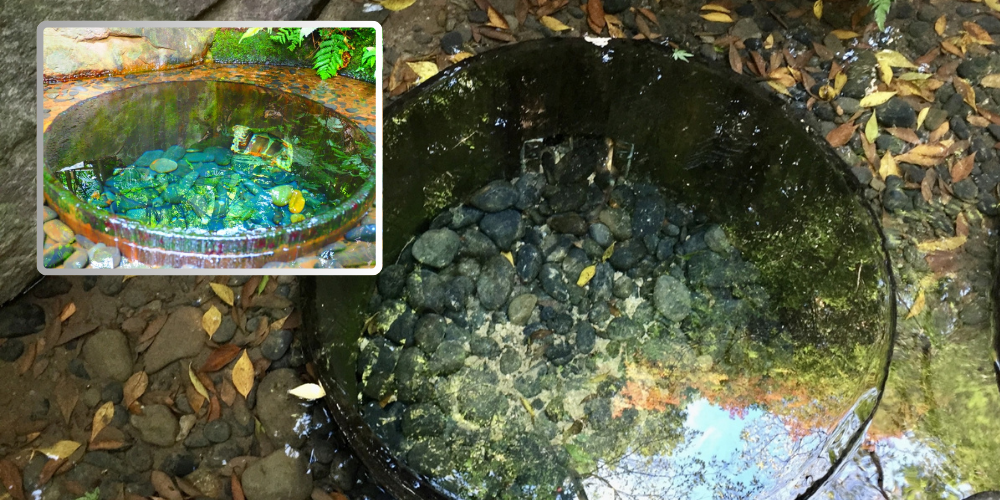
Kiyomasa’s Well, said to have been dug by Kato Kiyomasa, is one of Tokyo’s most famous natural springs. It has an average flow rate of 60 liters per minute, and the water temperature remains constant at around 15°C throughout the year.
Because this spring never dries up, it is considered a power spot, attracting many visitors seeking its reputed energy and tranquility.
Nanchi (the Southern Pond)

Nanchi, or the Southern Pond, is a beautiful pond located in the inner garden of Meiji Shrine, visible from Kakuuntei. It is named “Southern Pond” because it is situated on the south side of the main shrine.
A deck is provided, offering a spectacular view of the large pond. The pond is home to koi fish, and from early summer to summer, lotus flowers and cow lilies bloom, adding to its scenic beauty.
The water source of the pond is “Kiyomasa’s Well,” which flows under the sacred bridge on the southern approach and eventually merges into the Shibuya River. This integration with the natural environment of Meiji Shrine makes Nanchi a serene and picturesque spot, providing visitors with a sense of peace and relaxation.
The Other Attractions in Meiji Jingu
After touring Meiji Shrine, there are places where you can enjoy light snacks and drinks at a café or explore historical artworks.
Take your time to enjoy these experiences and make the most of your visit to Meiji Shrine.
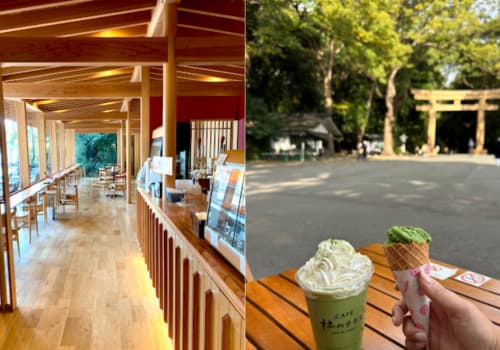
Forest Terrace Meji Jingu
The terrace at Meiji Shrine provides a relaxing spot for visitors to unwind and enjoy the beautiful natural surroundings.
It’s a place where one can enjoy light snacks and beverages while taking in the serene atmosphere.
| Business Hours | 9:00 – Meiji Jingu Closing Time |
| Official website | https://www.meijikinenkan.gr.jp/forestterrace/facility/moricafe.html |
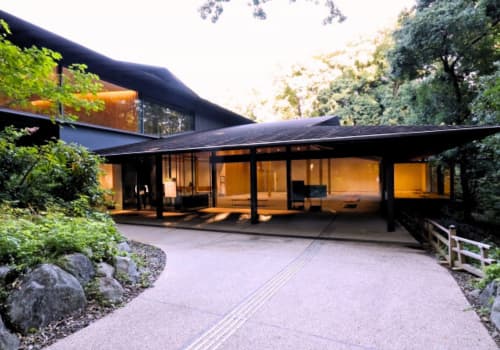
Meiji Jingu Museum
The Meiji Jingu Museum showcases valuable artifacts related to Emperor Meiji and Empress Shoken.
Through its exhibits of historical items and artworks, visitors can gain a deeper understanding of Meiji-era culture and the history of the imperial family.
| Business Hours | 10:00 – 16:30 Closed Days: Every Thursday (open if Thursday is a public holiday) Closed during exhibit change periods |
| Entrance Fee | Admission Fee: General: 1,000 yen High school students and below: 900 yen Children under elementary school age: Free |
| Official website | https://www.meijijingu.or.jp/museum/ |
Access to Meiji jingu

The main shrine of Meiji Shrine is located almost at the center of the grounds, with three closest entrances: Harajuku Entrance, Yoyogi Entrance, and Odakyu Line Sangubashi Entrance. Each entrance is about a 10-minute walk to the main shrine.
The nearest train stations vary depending on the entrance:
- Harajuku Entrance: JR Harajuku Station, Tokyo Metro Meiji-Jingumae Station
- Yoyogi Entrance: JR Yoyogi Station
- Odakyu Line Sangubashi Entrance: Odakyu Line Sangubashi Station
Visiting Meiji Shrine is most convenient from Harajuku Station.
From JR Harajuku Station, it’s just a few minutes’ walk to the Harajuku Gate, and then about a 10-minute walk to the main shrine. Tokyo Metro Meiji-Jingumae Station is also close to the Harajuku Gate, making it another convenient option. The area around Harajuku Station and Meiji-Jingumae Station offers many shops and cafes, allowing you to enjoy a stroll before or after your visit.
While other entrances each have their own charm, for first-time visitors, starting from Harajuku Station is highly recommended.
